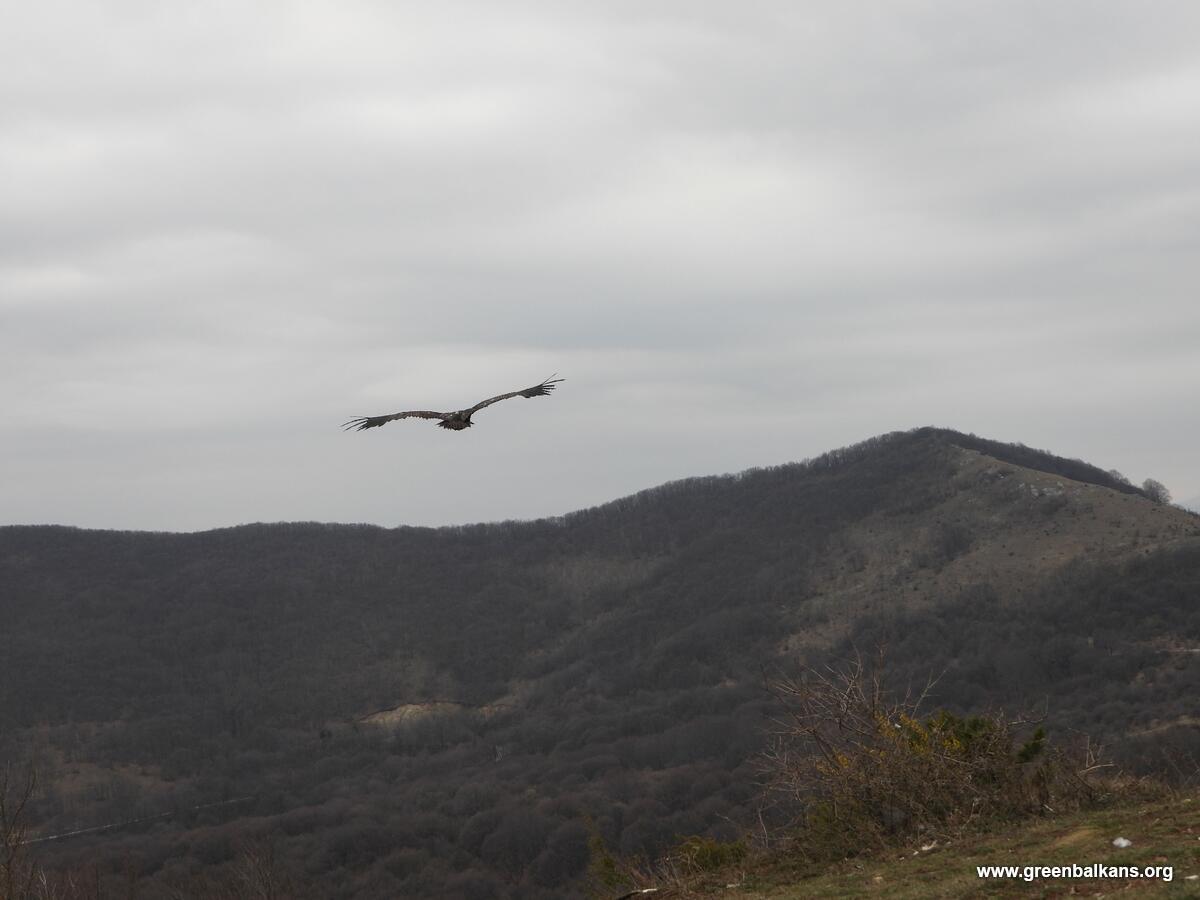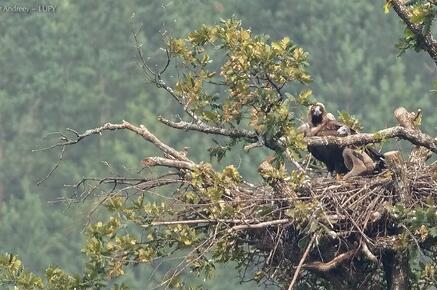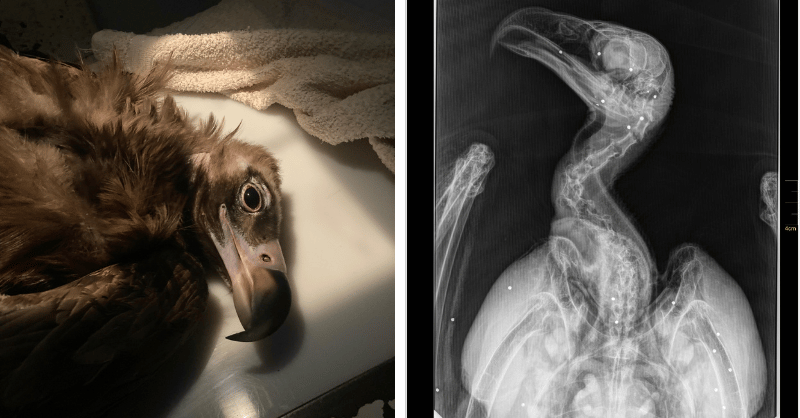Palombar, together with Portuguese and Spanish authorities, is strengthening efforts to monitor and protect Portugal’s most vulnerable Cinereous Vulture colony.
The Cinereous Vulture (Aegypius monachus) colony in Douro Internacional has become a symbol of persistence and hope. Established in 2012, it was only the second colony in Portugal—four decades after the species had vanished as a breeder in the country. For years, the colony consisted of a single breeding pair, and successful breeding seasons were rare.
By 2019, progress was slow but steady, with the colony reaching two breeding pairs. Then, in 2024, there was a breakthrough with eight breeding pairs. Despite this progress, it remains Portugal’s most fragile colony, isolated by more than 100 kilometres from the nearest colony in Spain. Its small size and isolation expose it to numerous threats, making cross-border protection efforts absolutely essential.

A river that unites
In this region, the Douro River forms a stunning natural border between Portugal and Spain. But for vultures—and those fighting to protect them—there are no borders.
On the Portuguese side, conservationists from the Institute for Nature Conservation and Forests (ICNF), particularly from the Douro Internacional Natural Park (PNDI), work alongside biologists from the Palombar association. Across the river on the Spanish side, the Junta de Castilla y León (JCyL) and Arribes del Duero Natural Park teams join the mission. Together, they protect and monitor the region’s rich biodiversity, united under the LIFE Aegypius Return project. Their collaboration stands as a shining example of cross-border cooperation in conservation.

Exchanging experiences to save vultures
In preparation for the 2024 breeding season, teams from both countries gathered at PNDI. The meeting included a technical visit to the acclimatization cage—where a new group of Cinereous Vultures would soon be housed. The teams reviewed feeding plans and video surveillance operations to ensure the birds’ well-being. The group also visited artificial nesting platforms constructed within PNDI. These platforms are designed to attract new breeding pairs and provide safe nesting sites.
A highlight of the visit was a knowledge exchange among specialists in climbing and high-altitude operations. Scaling steep cliffs to monitor nests is no easy task, and the teams shared techniques for tackling these challenging operations safely and efficiently.
A significant portion of the discussion centred on one of the biggest threats to vultures in the region: power lines. Numerous lines cross the Douro River, but many lack proper markings, creating deadly collision risks for large soaring birds.
This threat became heartbreakingly real in early 2024, when a young Cinereous Vulture named Freixo died after colliding with a power line. During the visit, dozens of Griffon Vultures were observed flying near and below the power lines, prompting discussions on improving markings and advocating for enhanced safety measures with the relevant authorities.
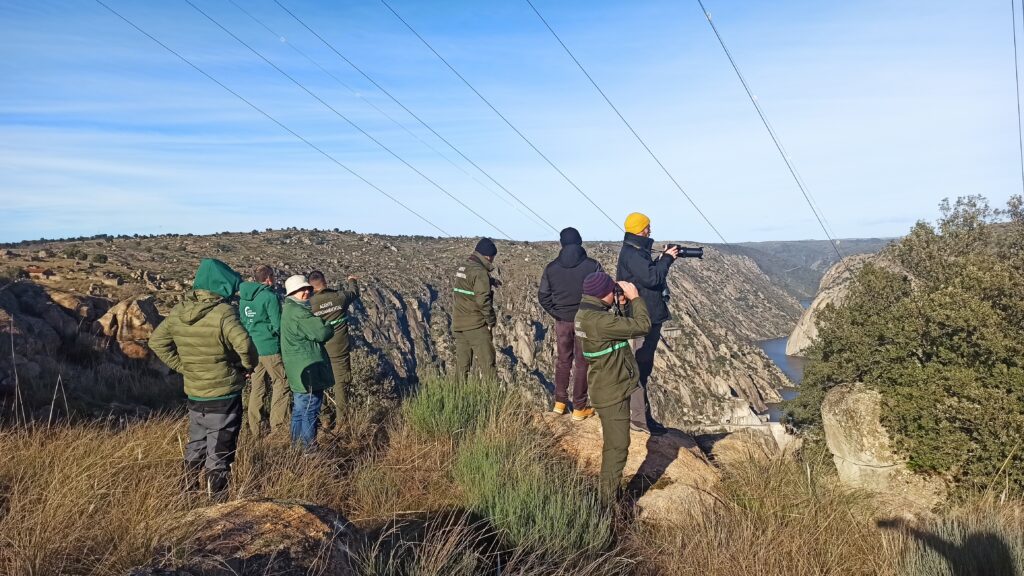
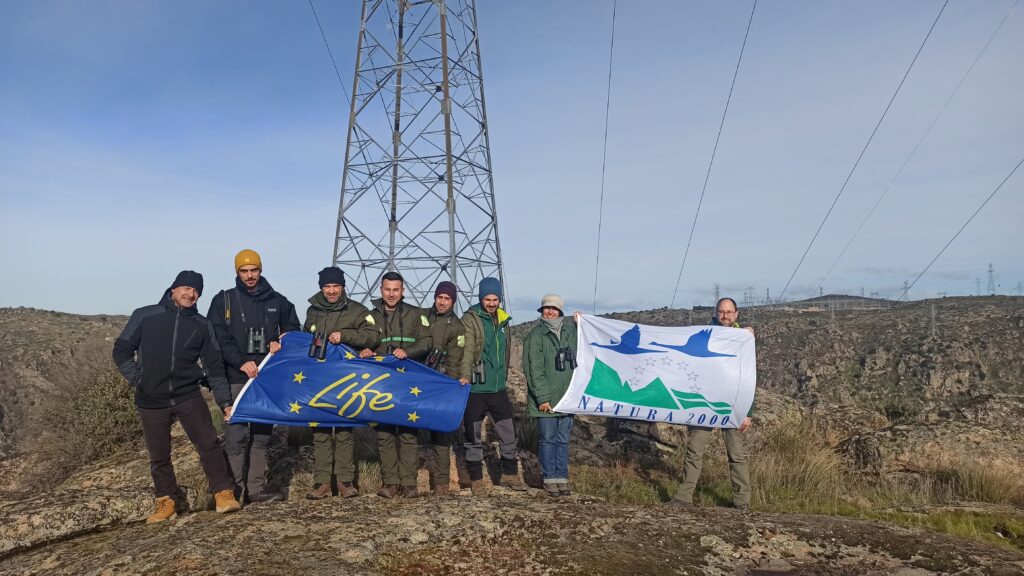
A long tradition of cross-border monitoring
For over 25 years, in Douro Internacional, the monitoring of necrophagous birds has been carried out in coordination and cooperation between the two Natural Parks, and 2025 will be no exception. From observation points on land and boats along the Douro River, the teams track breeding success and record key reproductive parameters.
A notable success story from 2024 was the first documented breeding of Cinereous Vultures on the Spanish side of the cliffs. Two chicks hatched and one was tagged and named Arribes. This effort, which involved the University of Oviedo, the CRAS-HVUTAD (Wildlife Rehabilitation Center of the Veterinary Hospital of the University of Trás-os-Montes and Alto Douro), and other LIFE Aegypius Return partners, allows remote monitoring of Arribes’ movements and health.
Jacinto: The senior vulture
GPS/GSM transmitters fitted on black vultures help detect unusual movements, enabling rapid intervention if a bird is in distress or immobilized. If a transmitter stops moving, it could signal that the bird has died, triggering an investigation into the cause of death. Alternatively, the transmitter may have simply fallen off.
This was the case with Jacinto’s transmitter, which stopped moving in February 2024, deep in a forest in Salamanca province, home to a breeding colony of Cinereous Vultures. Jacinto is well known to the LIFE Aegypius Return teams. He was ringed in January 2006 after being rescued in a weakened state and rehabilitated at RIAS (Wildlife Rehabilitation and Research Center) in the Algarve. Released after recovery, he was found again in March 2021, exhausted near Salamanca, showing signs of breeding activity. Urgent release was necessary, so he was rehabilitated at the Las Dunas Wildlife Recovery Center (managed by JCyL) and released two days later, this time named Jacinto and equipped with a GPS transmitter.
When Jacinto’s transmitter went silent in February 2024, conservationists feared he had died. However, during the breeding season, approaching nesting areas is generally avoided to prevent disturbances. Nevertheless, this case required investigation.
Cross-border cooperation once again proved vital. Initial remote observations by JCyL technicians did not confirm Jacinto’s presence. In April, ground inspections revealed the transmitter’s signal coming from the top of a pine tree supporting an apparently unused nest. The area was difficult to access, and specialized climbing equipment was needed to confirm whether Jacinto was there.
Fortunately, no signs of Jacinto’s death—such as feathers or bones—were found nearby. To avoid disturbing breeding activity, the team postponed further inspections until after the season. Finally, in October 2024, with the persistence of JCyL’s specialized climbing team, they accessed the tree, recovered the transmitter, and confirmed that there were no remains, suggesting Jacinto may still be alive and roaming freely.
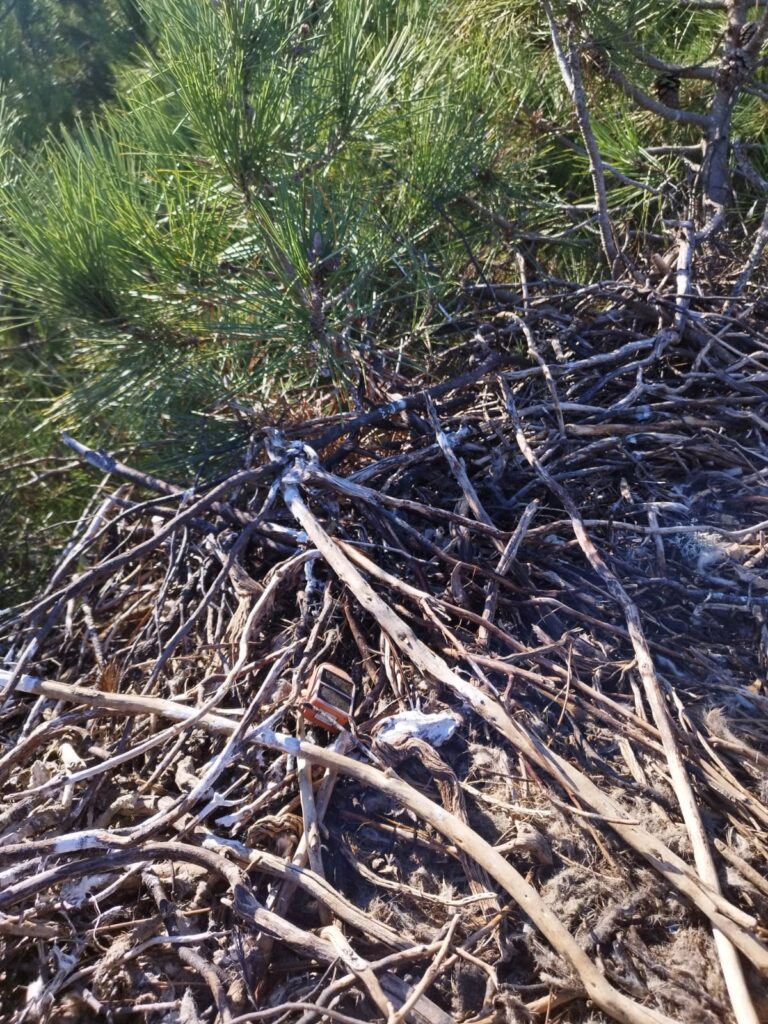
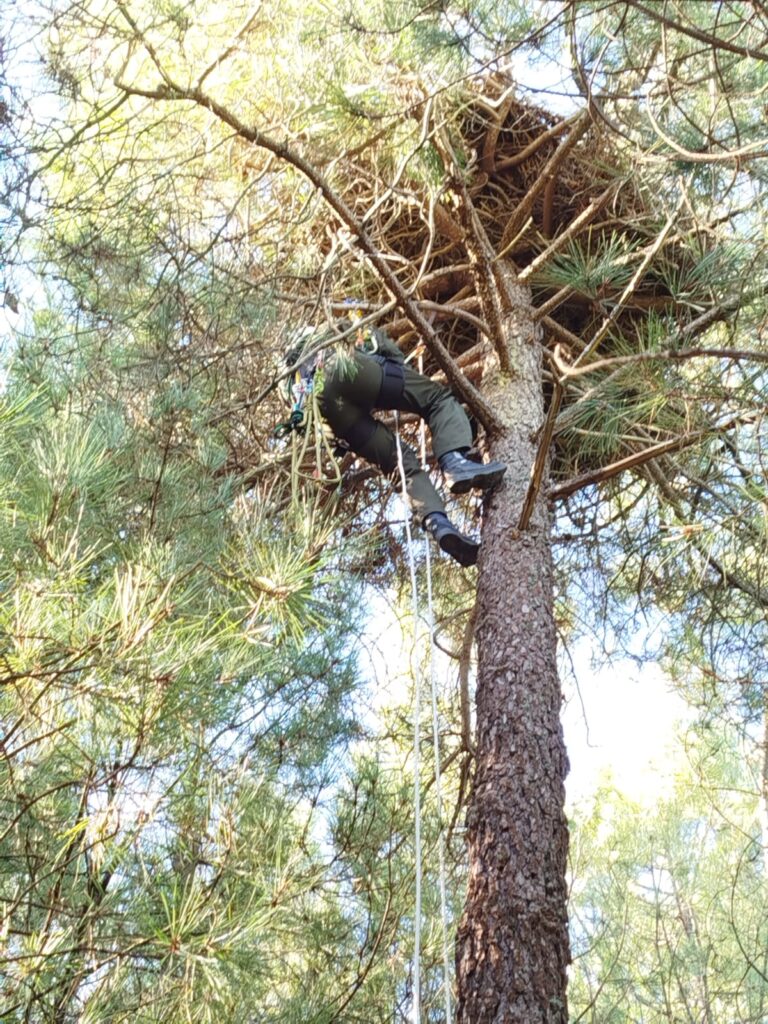
Recovery of the GPS/GSM transmitter of the black vulture Jacinto by teams from the Junta de Castilla y León. © JCyL
The LIFE Aegypius Return partners extend their gratitude to all the technicians and entities involved in this cross-border collaboration and commend the effective coordination of efforts.
About LIFE Aegypius Return

The LIFE Aegypius Return project is co-financed by the European Union’s LIFE programme. Its success depends on the involvement of all the relevant stakeholders, and on the collaboration of the partners, the Vulture Conservation Foundation (VCF), the coordinating beneficiary, and the local partners Palombar – Conservation of Nature and Rural Heritage (with co-funding from Viridia – Conservation in Action), Herdade da Contenda, Sociedade Portuguesa para o Estudo das Aves, Liga para a Protecção da Natureza, Associação Transumância e Natureza, Fundación Naturaleza y Hombre, Guarda Nacional Republicana and Associação Nacional de Proprietários Rurais Gestão Cinegética e Biodiversidade.

